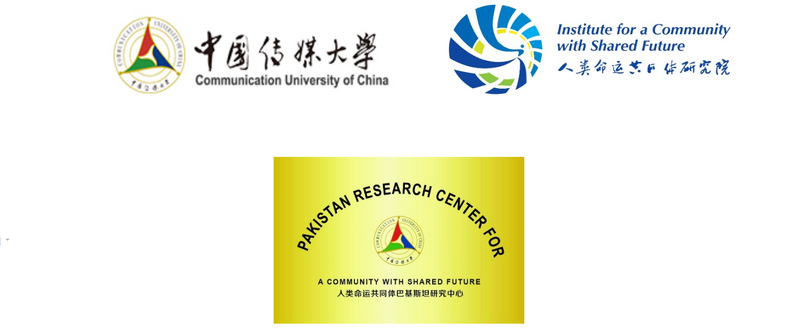

By Mr. Khalid Taimur Akram, Executive Director, Pakistan Research Center for a Community with Shared Future,
Communication University of China (CUC), Beijing, China
“A friend in need, is a friend indeed”
On 21 May 1951, Pakistan and China established their diplomatic relations. However, the attachment of true friendship date back to centuries-old trade relations, when Chinese traders travel through the sub-continent for business trips to Europe, the Middle East, and the world’s other parts via the ancient Silk Route. Both countries have been enjoying strong ties since the commencement of diplomatic relations. The relationship bloomed into an ‘’All-weather cooperative partnership” with many projects of inclusive economic development.
It is a proud time to witness the China-Pakistan relationship as a model of peaceful coexistence and win-win cooperation between countries with different cultures and social systems. China has left no stone unturned to help its true friends in a time of crisis. In this regard, with the full support of China, Pakistan has emerged as a significant player in regional and international socio-politico and economic discourse.
China engages all countries through its grand visions of cooperation and inclusive economic development. China’s Belt & Road Initiative (BRI), its mega flagship project China-Pakistan Economic Corridor (CPEC), and many other potential projects clearly depict President Xi Jinping’s integrating visions. These initiatives of grand alignments always acquired full support from Pakistan. Thus, Pakistan has remained one of the best allies of China in every leap and bound.One of the main essences of this strong bond is an economic partnership. In this new era, the China-Pakistan Economic Corridor (CPEC) is the major highlight of both countries’ relationships.
CPEC is a major game-changer project in the fast-evolving Belt and Road Initiative (BRI). It is one of the most comprehensive of the six BRI economic and infrastructure corridors on land. For Pakistan, it is perceived “as the harbinger of a new era of connectivity and integration” that will transform not only the region’s economic development but also the well-being of Pakistan’s provinces. CPEC has brought immense opportunities and socioeconomic transformations and this is all made possible due to China’s innovative projects for economic expansion and connectivity in Pakistan.
In this age of evolving geopolitical environment and economic integrity, China has emerged as a leader in extending cooperation and assisting countries in reviving their economies. The economic uplift and infrastructure development of many third-world and developing countries demonstrate BRI’s success and China’s efforts. In this aspect, the visionary Chinese leadership has initiated great projects for development in Baluchistan. In 2015, after the launch of the China Pakistan Economic Corridor (CPEC), the socio-political stability of Baluchistan became crucial for Pakistan’s leadership and policymakers. In this aspect, China has left no stone unturned to revive the economic structure of Baluchistan and assist its best friend, Pakistan, in achieving desired outcomes for stability. Timely implementation of CPEC projects under Chinese assistance has helped overcome the challenges faced by the local population.
The major investment of CPEC projects falls under communication infrastructure, energy projects, the Gwadar deep-sea port, and establishing Special Economic Zones (SEZs). The detailed and smooth planning by the Chinese authorities has attracted investors to various sectors that can play a significant role in the provinces’ economic activities and development. Chinese socioeconomic projects under CPEC have emerged as a boon for Pakistan and the local people of Baluchistan. Moreover, Gwadar port is on its way to becoming international trade, transport and connectivity hub. Thanks to the eagerness of the Chinese government and enterprises to invest in Baluchistan, especially in Gwadar port, road connectivity projects, and industrial zones. These initiatives have resulted in massive economic activities, which would create jobs and help proliferate businesses that would improve the living standards of the local people. To meet the energy/electricity demand, a large number of power plants have been installed in different parts of the country. In addition to that, China has introduced a modern renewable energy matrix system in order to reduce Pakistan’s dependency on conventional methods for energy generation. Special focus has been given to formulate environment-friendly policies and green growth for sustainable economic outcomes.
Baluchistan is the land of breathtaking beauty, mountains, precious minerals/metals, and immense seacoast potential. Under Chinese development projects, it is likely to emerge as a global tourist attraction, which would attract bulk foreign direct revenues and generate lucrative profit. Baluchistan’s mineral resources lie untapped, while some exposed mineral deposits are getting wasted because of rat-hole mining. However, China has introduced advanced mining systems and launched robust plans to safely utilize rare and precious minerals/metals/stones, including onyx, which can provide a huge base for setting up processing and manufacturing plants to produce export-quality value-added products.
Furthermore, the construction of Gwadar port and infrastructure facilities such as road networks have boosted the local economy and thus improved the quality of life not only in the province but also elsewhere in Pakistan. It is important to highlight that there is a consensus among all the stakeholders of the CPEC on the construction of the Gwadar port. Even in the Covid-19 pandemic, the pace of CPEC projects has not been halted, showing the due diligence and seriousness of China to complete the project on time.
Colossal efforts and assistance by the Chinese authorities have also enabled us to achieve a milestone in the education sector. CPEC has also been termed as ‘China-Pakistan knowledge Corridor’ as it covers major areas of research & development. The mutual beneficial partnership resulted in harmonies cooperation for a glorious future. In 2017, the CPEC Consortium of Universities was founded at Fudan University under the auspices of the Higher Education Commission of Pakistan and the China Association of Higher Education. Its mission is to promote academic exchanges, provide large scholarships, enhance people-to-people contacts, and promote cultural understanding between Chinese and Pakistani universities for the high-quality development of CPEC. Each year, many Pakistani as well as Chinese students have been provided the opportunity for joint academic, cultural, and research activities in variety of areas.
Under all these assertions, it is clear that this highly prosperous relationship between China and Pakistan is unprecedented. Joint cooperation in many domains and assisting each other in every leaps and bounds have paved the way for future cooperation and profound diplomatic ties. With each passing day, this relationship is becoming more closely integrated into each other’s respective development strategies. Therefore, with the joint efforts, China and Pakistan will make new grounds for collective benefits and increasing economic outreach under CPEC. The bilateral relationship indeed portrays a great model of inter-state harmonious ties.
The article was originally published by Pakistan Research Center for a Community with Shared Future (PRCCSF)
To view, see the links below:
Website @PRCCSF:https://prccsf.com/paper/pdf/A-Journey-towards-Shusha-the-Cultural-Capital-of-Modern-Azerbaijan.pdf
Facebook: https://www.facebook.com/102214129094936/posts/128034093179606/
Twitter: https://twitter.com/prccsf/status/1525065113362890753?t=4yEDZW7Bg729iKFvpcnziA&s=19
